Why is my inertial acceleration test Hp different than my steady state power run?
There can be multiple reasons for this behavior:
1) Are you correctly using DYNO-MAX’s inertia compensation? Verify selection of “#1 Compensation On” choice from the drop down list on the Run Information – Inertia tab. With compensation active you also need the correct polar moment of inertia value specified in the respective RPM-A, B, and C fields.
DYNO-MAX provides the multiple inertia entry fields to conveniently support inertia compensation – even when rotating components are being driven from different gear ratio shafts. RPM-A is for entering values for parts that rotate at Engine speed (crank trains, drive plates, etc.). RPM-B is for components at an intermediate gear ratio (e.g. a driveshaft behind a transmission, or a chassis dyno roller). RPM-C is for specifying the inertia of components that rotate at the absorber’s speed. Note: If all the components are operating at the same RPM, then you could combine their total inertia values in any one of these fields.
Inertia compensation uses the (above) inertia entries in conjunction with the DYNOmite’s rotational acceleration data for the shaft(s). Whenever there is a change in a component’s (shaft’s) RPM, DYNO-MAX calculates the effective Hp energy (and equivalent torque) utilized (or returned) in making that speed adjustment. It then sums the inertial torque with the strain gauge measured torque, to return an accurate (acceleration independent) reading. Its data that traditional load cell installations do not capture correctly alone.
DYNO-MAX’s compensation allows running meaningful sweep tests. Without proper inertial compensation, a dynamometer will report lower power whenever the engine is spinning up the shafts – and artificially high power (augmented by the “flywheel energy”) during periods of negative acceleration. Note: Unscrupulous dyno operators sometimes use the load valve to quickly tug down an uncompensated engine test – producing fictitiously inflated Hp.
2) That particular engine combination really produces different power under acceleration than it does steady state! For example:
• The engine’s fuel injection acceleration compensation map is (or carburetor’s accelerator pump calibration) is hurting performance compared to its steady state map (or jetting) – or vice versa. Try experimenting with the fuel curve while watching the resulting Hp and AFR numbers.
• Changes in cooling, combustion chamber, intake, or exhaust system temperatures (especially for turbo or two stroke applications) will often cause large changes in power (and tuning requirements).
• Retesting a third time, right after heat soaking the engine during the steady state test, is a good way to isolate this cause. Once you confirm the relationship, try to use the knowledge to improve on the condition.
• Tire temperature affects traction between tests. Monitor it.
• The dyno test cell might be getting hot (or exhaust filled) during the longer test. Fix your rooms ventilation!
